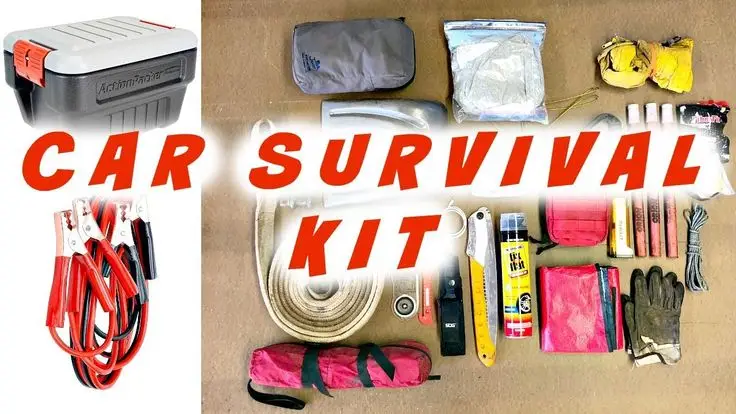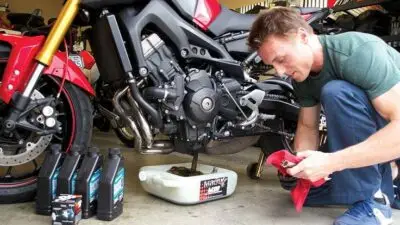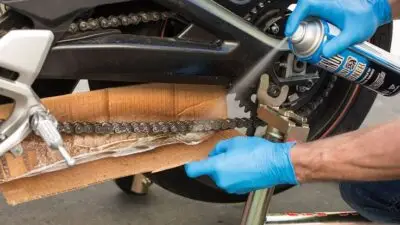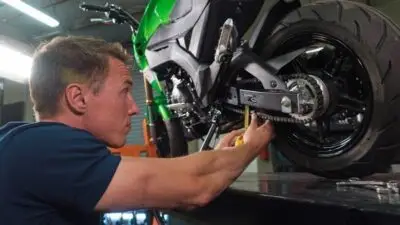Being ready for surprises on the road is just part of being a responsible driver. A solid car emergency kit can really make a difference if you break down, get into an accident, or run into nasty weather.

A good kit should help you fix minor car issues, stay safe, and get by until help shows up. Honestly, most folks can build a basic kit from stuff lying around the house, plus a few extras you might need to grab.
1) Jumper Cables

Jumper cables are an absolute must for any car kit. If your battery dies, you’ll need them to get a jump from another car—otherwise, you’re probably stuck.
When picking out jumper cables, go for heavy-duty ones that are long enough to reach between cars, especially if you can’t park nose-to-nose.
The American Red Cross lists jumper cables among the 10 essential items for car emergencies. They’re simple, but honestly, they can turn a bad day around.
It’s worth learning how to use jumper cables before you actually need them. Messing up could damage your car’s electronics or even cause injury. A lot of sets have instructions printed right on the cables or packaging.
2) Reflective warning triangles

Reflective warning triangles are one of those things you hope you never need, but you’ll be glad to have if your car’s stuck on the roadside. These bright triangles let other drivers know you’re stopped, which can prevent a bad situation from getting worse.
Most triangle kits are built to be super visible, day or night. They fold up small, so they won’t hog trunk space.
Safety pros say you should set up the triangles at different distances behind your car—start about 10 feet back, then space the others out further. That way, people get plenty of warning to slow down.
Carrying three triangles is the common advice, especially for highways or busy roads. It sounds like overkill, but on a dark road? You’ll want all the visibility you can get.
Ready.gov lists warning triangles as a must-have for car emergencies. They work well with other visibility tools like flashlights or a bright vest.
The nice thing is, reflective triangles don’t expire and there’s no fire risk like with flares. You can reuse them again and again.
3) First-aid kit

A decent first-aid kit is a no-brainer. It lets you handle minor injuries until you can get proper help.
The basics? Bandages, antibiotic ointment, antiseptic wipes, and some gauze pads. You’ll want to throw in cotton swabs too.
Don’t skip medical tape, tweezers, and a tube of hydrocortisone. These come in handy for small cuts, splinters, or rashes.
I’d also add a few over-the-counter meds like Tylenol, Benadryl, and maybe some Pepto Bismol. You never know when a headache or upset stomach will strike on the road.
If you take prescription meds, keep a backup dose and emergency contacts in your kit. Everyone’s needs are a little different, so tailor it for you and your family.
Check your kit every so often and swap out anything that’s expired or used up. No point carrying around empty boxes or dried-out wipes, right?
4) Flashlight with extra batteries

Every emergency kit needs a flashlight. You’ll need it to see under the hood at night, signal for help, or just find your way if you’re stuck in the dark.
LED flashlights are the way to go—they last way longer and shine brighter than the old-school kind. If you’re in a pinch at night, that extra brightness matters.
Always stash some extra batteries with your flashlight. Car temps can drain batteries faster than you’d think, so swap them out every now and then.
For cold places, lithium batteries hold up better than regular ones. Alkalines can just quit on you if it’s freezing outside.
Keep the flashlight somewhere you can grab it fast—glove box, center console, wherever you’ll remember. The Red Cross even recommends testing it once in a while to make sure it’s not dead when you need it.
5) Portable tire inflator

A portable tire inflator is one of those “thank goodness I have it” tools when you find a flat. Most plug into your car’s 12V outlet and will top up a tire in just a few minutes.
Some inflators are tiny and fit in your glove box, while others are bigger and a bit more powerful. The Viair 84P is a solid pick if you want something quick and accurate.
People often keep their inflator under the driver’s seat or with the spare tire. Doesn’t really matter where, as long as you can grab it when you need it.
Look for one with a built-in pressure gauge so you don’t over- or under-inflate your tire. Some even have LED lights for night use, and a few adapters for things like basketballs or pool toys.
Give your inflator a quick test every few months, and especially before road trips. Nothing worse than pulling it out and realizing it doesn’t work.
6) Spare tire with jack and lug wrench

A spare tire, jack, and lug wrench are still the basics for changing a flat tire yourself. With these, you’re not at the mercy of roadside assistance.
Check your spare’s air pressure every six months or so. A flat spare is just a round paperweight. Most cars keep these tools in the trunk or under the vehicle, but double-check so you’re not searching in a panic.
It’s worth practicing with the jack and lug wrench before you need them. The jack has to go in the right spot, and the wrench should fit your lug nuts. You don’t want to figure that out on the side of the highway for the first time.
If you’re not into changing tires, a tire repair kit can patch small holes and get you to a shop.
And don’t forget a pair of mechanic gloves—your hands will thank you after wrestling with a dirty tire.
7) Emergency blanket

An emergency blanket is a must-have in any car kit. These things are lightweight, compact, and honestly, they might just save your skin if you get stranded in the cold.
There are a few types out there. Mylar space blankets are a favorite because they reflect up to 90% of body heat.
They’re waterproof, and if you get one in orange, it’s pretty hard to miss—helpful if you need rescuing. Wool blankets are another solid pick.
Wool keeps you warm even if it gets wet, which is honestly a lifesaver in some situations. Wool blends are a bit softer but still do the job.
Some folks pack both Mylar and wool blankets. The Mylar is tiny and easy to stash, while the wool one is just more comfortable and feels cozy if you’re stuck for a while.
Keep your emergency blanket somewhere you can actually grab it fast. You don’t want to be digging through the trunk in a snowstorm, right?
8) Multi-tool or Swiss Army knife

A good multi-tool or Swiss Army knife is something you’ll actually use. These little gadgets cram a ton of functions into one thing you can toss in your glove box.
If you’re stuck on the side of the road, a multi-tool can help with everything from cutting seat belts to quick repairs or just opening a stubborn package. The best ones feel sturdy and have pliers, a blade, and screwdrivers.
Plenty of people swear by Leatherman-style tools for their toughness. Swiss Army knives with scissors are also great—sometimes you just need to snip something, you know?
Ideally, your tool should have blades, screwdrivers, pliers, scissors, and a can opener. Some even throw in wire cutters or window breakers, which is a nice bonus.
Stash your multi-tool where you can grab it without digging. Glove box or center console is perfect. This versatile tool is honestly the MVP of a car emergency kit.
9) Car cell phone charger

A car cell phone charger is non-negotiable these days. Your phone is your lifeline when you’re stuck, so keeping it powered is a no-brainer.
Lots of chargers now have more than one USB port, which is handy if you’re not driving solo. Everyone wants to charge their stuff at the same time, right?
For extra peace of mind, pack both a regular car charger and a portable power bank. That way, you’re covered even if your car battery is dead.
Make sure you’ve got charging cables that fit all your devices. It’s wild how fast your phone can die when you’re using GPS or calling for help over and over.
Some new chargers come with extras like built-in flashlights or even window breakers. Staying connected could be the difference between waiting for hours or getting help fast.
10) Fire extinguisher

Don’t overlook a small fire extinguisher for your car kit. It’s one of those things you hope you never need, but if you do, you’ll be glad it’s there.
Pick up a compact one that’s rated for vehicles. Class B and C extinguishers are best—they handle flammable liquids and electrical fires, which are the usual suspects in cars.
Keep your car-safe extinguisher somewhere you can grab it in a hurry. Under the front seat or in the door pocket usually works.
Check the pressure gauge every so often to make sure it’s still good. Fire extinguishers don’t last forever—they need a little TLC to stay ready.
If a fire looks too big for your extinguisher, don’t try to be a hero. Back away and call for help instead.
Small auto extinguishers are pretty affordable and honestly could save your life if things go sideways on the road.
Why Car Emergency Kits Are Essential

Car emergency kits are your backup plan when things go wrong—breakdowns, accidents, bad weather, you name it. Having the right stuff on hand can turn a disaster into just a hassle.
Reducing Risk During Unexpected Situations
Anything can happen on the road, honestly. A well-stocked kit helps you handle whatever gets thrown your way, from breakdowns to blizzards.
If you get stuck somewhere remote or in bad weather, things can get scary fast without supplies. Jumper cables can get your car going again, and reflective triangles make you visible to other drivers.
Food, water, and a blanket are lifesavers if you’re waiting for help in the cold. Some folks have made it through tough situations just because they had snacks and water in the trunk.
First aid gear means you can patch yourself up until help arrives. Sometimes that’s all it takes to keep a small problem from getting worse.
Peace of Mind for Drivers and Passengers
There’s something comforting about knowing you’re ready for whatever. Having an emergency kit just makes travel less stressful, especially on long trips or unfamiliar roads.
If you’ve got kids, you know the value of snacks, water, and a warm blanket during unexpected delays. It keeps everyone a bit happier when plans go sideways.
A charger in your kit means you can always call for help. That alone is enough to make you feel a little more in control.
Even on your daily commute, flat tires or fender benders can throw you off. The right tools and supplies make these hiccups way less of a headache.
How to Inspect and Maintain Your Emergency Kit

Don’t just toss a kit in your trunk and forget about it. Checking your stuff now and then keeps everything ready for when you actually need it.
Swap out expired items, replace what you’ve used, and make sure everything works. It’s one of those things that’s easy to skip, but you’ll regret it if you do.
Recommended Inspection Schedule
Give your car kit a full check every six months—spring and fall are good reminders, especially when you’re changing clocks. It’s a simple way to get ready for seasonal surprises and keep your stuff fresh.
Mark it on your calendar or set a phone reminder. Pull everything out and make sure it all still works and nothing’s missing.
Quick monthly check-ins help too:
- Test flashlights and anything with batteries
- Make sure your phone charger works
- Check the spare tire’s pressure
- Look for leaks or damage to food and water
If your family’s always on the go, check the essentials more often—especially after you’ve actually used something from the kit.
Replacing Expired or Used Supplies
Keep an eye on expiration dates for perishable items. First aid supplies, medications, food bars, and batteries all have a shelf life that sneaks up on you.
Items to check regularly for expiration:
- First aid supplies (antiseptics, ointments)
- Food and water provisions
- Road flares
- Batteries for flashlights and devices
If you use anything from your kit, replace it right away instead of waiting for your next check. That way, your kit’s always ready when you need it most.
Set aside a little money just for emergency kit upkeep. It’s surprisingly easy to forget to swap out expired items—especially in first aid kits and snacks—until it’s too late.
Try keeping an inventory with expiration dates in your glove box or on your phone. Makes shopping for replacements a whole lot easier and you’re less likely to miss something important.
Frequently Asked Questions

People have a lot of questions about what to pack in a car emergency kit. There’s no one-size-fits-all answer, but here are some of the most common concerns and ideas for customizing your kit.
What items are essential for a winter car emergency kit?
Winter driving’s a whole different beast. Good tires and a windshield scraper are must-haves for safety in the cold.
Pack warm blankets, extra gloves, hand warmers, and a folding shovel for digging out of snow. Ice melt or even cat litter can help if you’re stuck on a slick patch.
It doesn’t hurt to throw in a thermos of something hot and calorie-dense snacks. If you’re stranded for a while, a battery-powered heater can make a world of difference.
Which tools should be included in a homemade car survival kit?
For basic tools, start with a multi-tool, adjustable wrench, and a couple of screwdrivers. Tow straps are lifesavers when you need a pull.
Duct tape, zip ties, and bungee cords come in handy for quick fixes. A pocket knife or scissors can help cut seat belts or packaging in a pinch.
Having a socket set that fits your car doesn’t hurt. These basics can get you through minor issues until a pro can step in.
How do you assemble a car emergency kit suited for a female driver?
Every driver should have the standard safety items, but there are a few extras worth considering. A whistle or personal alarm is a good idea for solo drivers.
Keep emergency contacts programmed in a backup phone or charger, just in case. Comfortable shoes are a must if you ever need to walk for help.
Depending on local laws, self-defense items can offer peace of mind. Make sure to check your kit regularly so everything works when you need it.
What are the top recommended items for a comprehensive car emergency kit?
The top 25 essential items for a car emergency kit include jumper cables and reflective warning triangles. A first-aid kit with bandages, antiseptic wipes, and pain relievers is a must.
Don’t forget a flashlight with extra batteries and a portable tire inflator. A fire extinguisher rated for vehicles is also really important.
Water bottles and non-perishable food can tide you over during long waits. Emergency blankets and weather-appropriate clothes help you handle whatever nature throws at you.
What does a well-equipped car first aid kit contain?
A decent first aid kit should have adhesive bandages in different sizes and some gauze pads. Antiseptic wipes, antibiotic ointment, and disposable gloves are there to keep things clean.
Medical tape, scissors, tweezers, and a CPR face shield all come in handy for unexpected injuries. Don’t forget pain relievers, antihistamines, and any personal meds you might need.
Having emergency contact info and quick first aid instructions can be a lifesaver if panic sets in. Check your first aid supplies now and then so you’re not caught with expired stuff.
Where can I find a reliable checklist for a car emergency kit?
Government safety websites, like the California Highway Patrol, have trustworthy checklists for emergency car kits. You’ll usually find the basics for roadside safety there, nothing too fancy, but solid advice.
Automotive sites such as Toyota’s car tips section also dig into the details. Their lists often mention a few things you might not have thought about, which is always helpful.
Some emergency preparedness websites focus on different regions or even specific weather. They often toss in printable checklists, making it easier to keep track of what you need when you’re out shopping for supplies.



